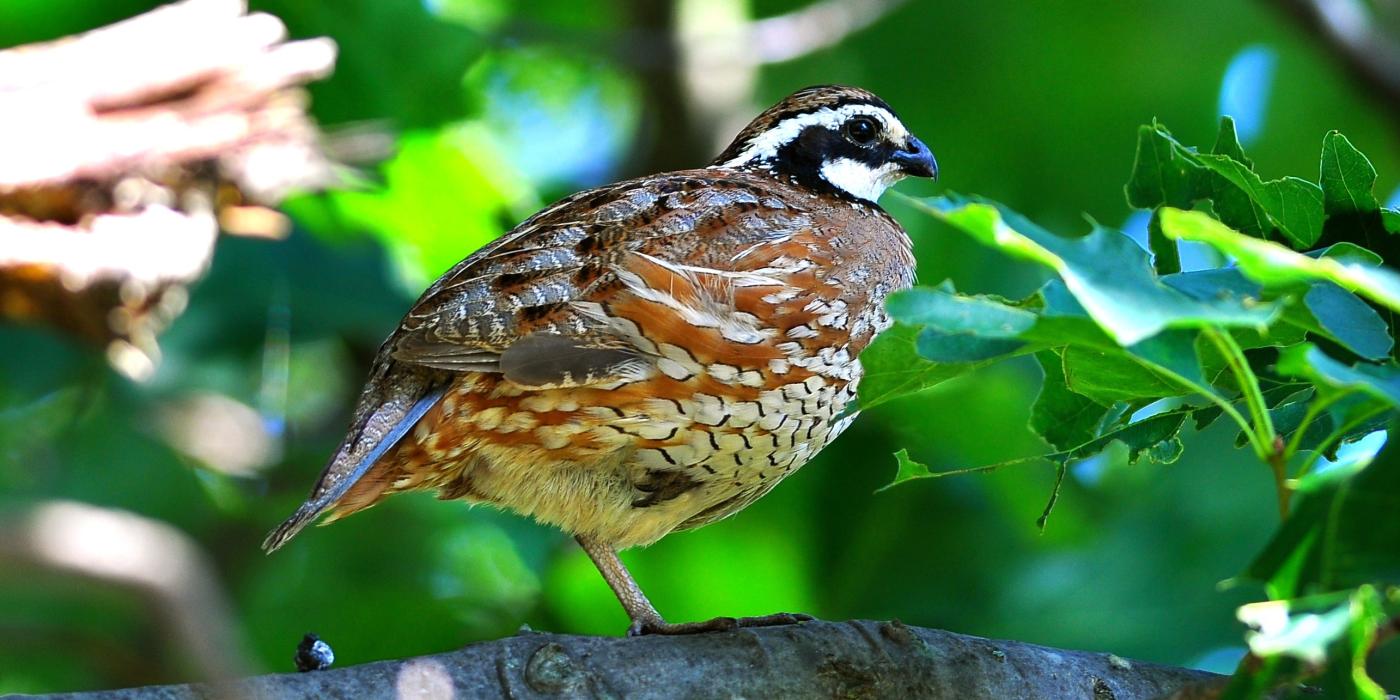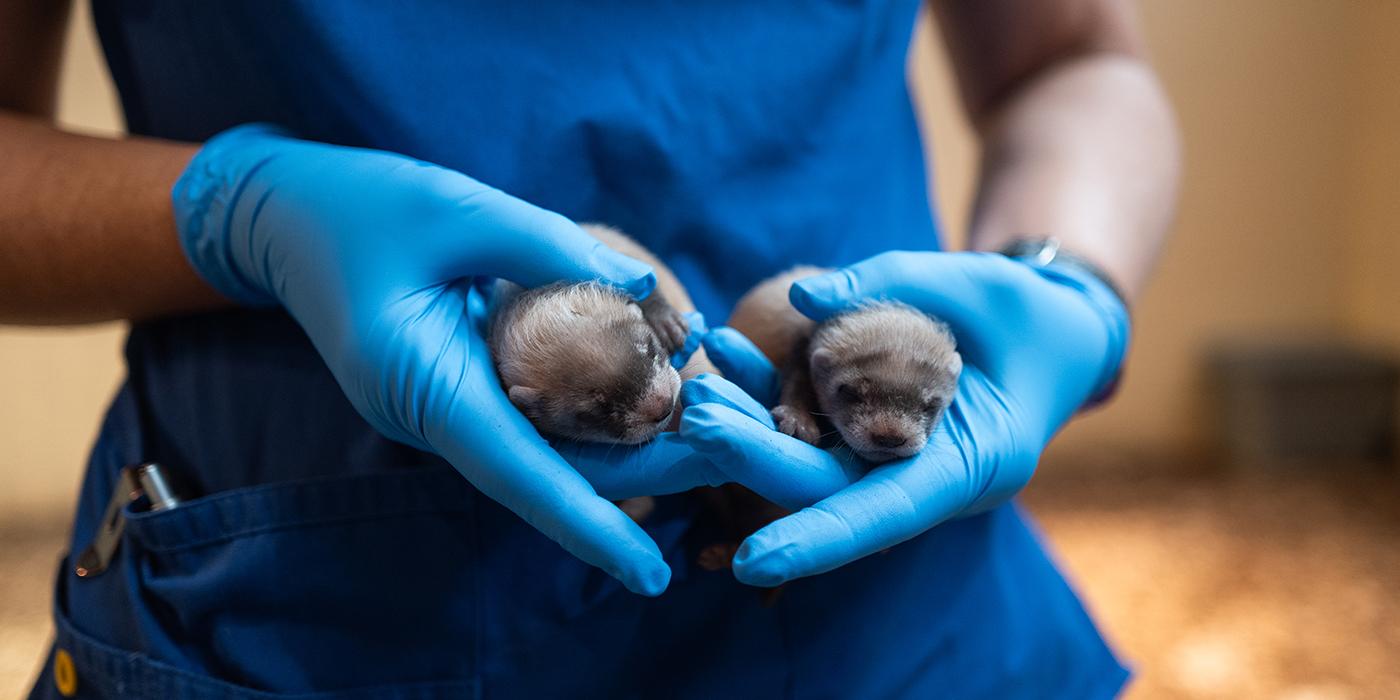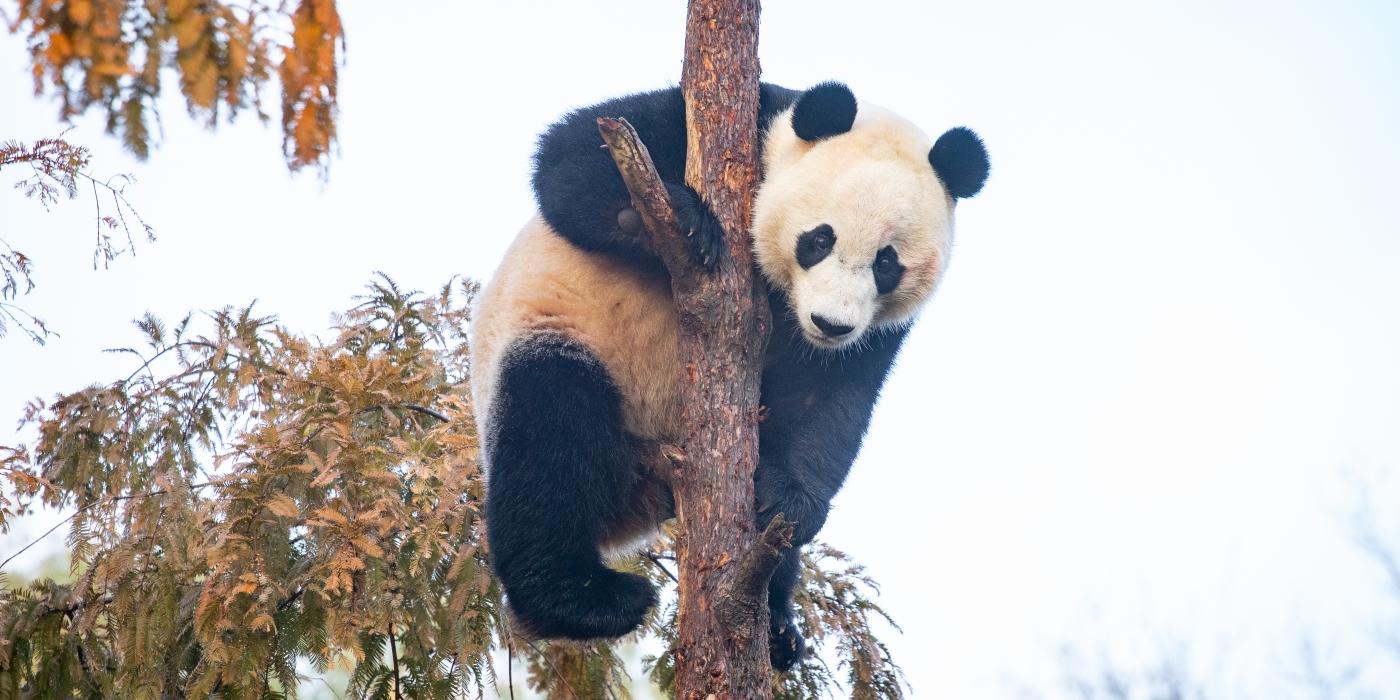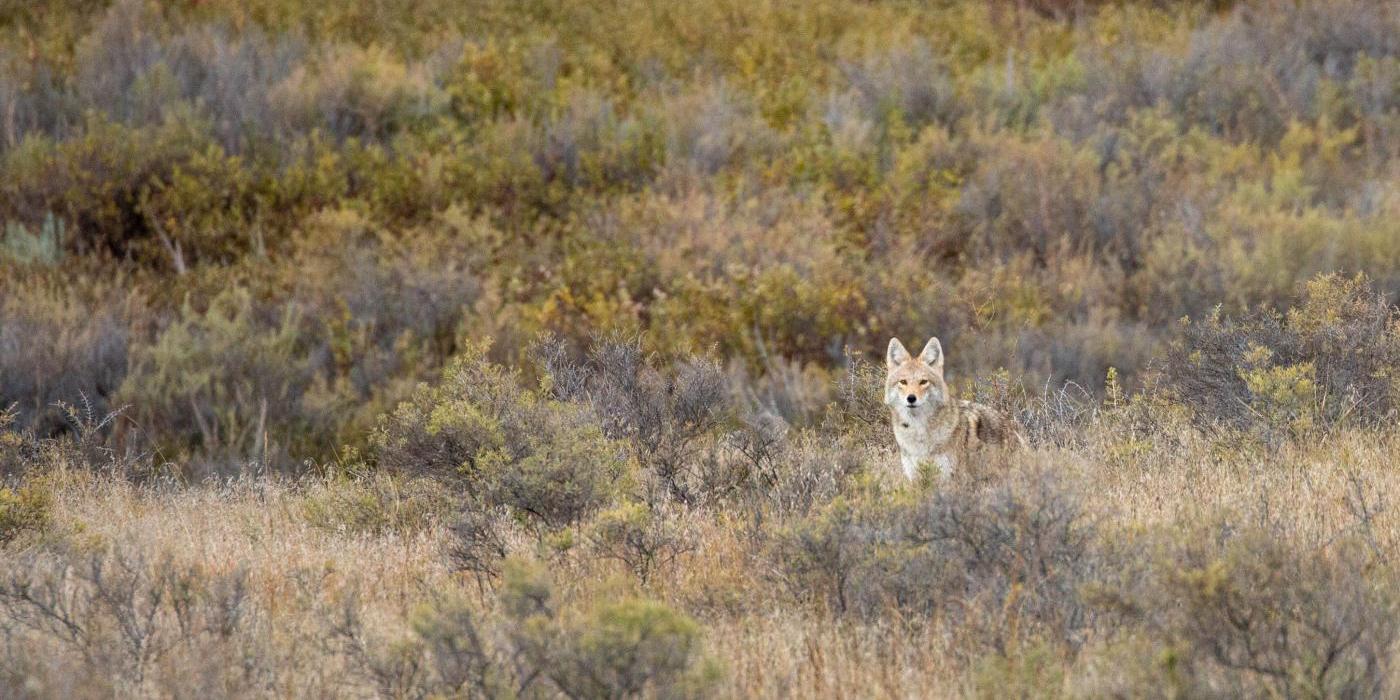Answering the Call for Bobwhite Quail
Forty years ago, the distinctive call of the bobwhite quail could be heard throughout Virginia’s grasslands. Now, their call is fading — silenced by changing farm practices and land development that have led to the quail’s steep population declines. The Smithsonian Conservation Biology Institute’s Virginia Working Landscapes program has joined a nationwide effort to save this charismatic species and its habitat. Learn more about their surveys from Charlotte Lorick, outreach coordinator for Virginia Working Landscapes.
What is your favorite fact about bobwhite quails?
It’s hard for me to pick only one favorite thing, but what first comes to mind is their iconic ‘bob-white’ call. Standing in a meadow on an early morning survey and hearing that call truly makes my heart sing. It’s a nice reminder that working in the field of conservation, to me, involves connecting with nature through both the mind and the heart.
I encourage those who have not yet heard a northern bobwhite quail to visit the Cornell Lab of Ornithology’s website and have a listen. Better yet, visit a national or state park! The National Park Service, our partner in this study, is doing a great job managing Manassas National Battlefield Park for quail habitat. You may just hear one during your visit.
Why is Virginia Working Landscapes studying them?
Bobwhite quail are one of many species of birds that scientists are concerned about. The International Union for Conservation of Nature considers them to be a “near threatened” species. However, their populations are decreasing at an extraordinary rate. Since 1970, we have lost 78 percent of bobwhite quail across their range. With only 20 percent of the population remaining, every bird counts.
In particular, we’ve seen a steep decline in Virginia. There is a great need to understand and study these birds in our region. To do so, we are contributing to a nationwide effort led by the National Bobwhite Conservation Initiative, to determine which strategies and land management practices are most effective to help quail populations make a comeback in Virginia and throughout their entire range.
Listen closely to hear the calls of the bobwhite quail during a recent survey conducted by Virginia Working Landscapes.
What threats do they face in their native habitat?
Bobwhite quail face many threats, and these can vary in different regions. One contributor to their decline is the process of habitat loss and fragmentation. Quail thrive when they have access to early-successional habitats — ones where trees, grasses and shrubs grow quickly but need human intervention to be maintained.
As our farming practices have evolved, many modern farms have become larger with fewer fence-rows and “cleaner” with more efficient mowing practices. As such, there are fewer “messy” hedgerows and weedy, shrubby idle areas surrounding crops, hayfields or pastures. These dwindling idle areas are preferred habitats for quail to find food and escape predation. In fact, some unpopular weeds, such as common ragweed, often mowed or kill with herbicide, are nutritious food sources for quail.
One important thing to understand about quail is that they are ground-dwelling birds, so they may have a harder time relocating or rebuilding populations as they lose habitat or become separated in isolated groups. In fact, their average flight time is typically only 5 seconds; they often only take flight to escape predators like foxes, coyotes and raptors. This means that access to protective cover on the ground, like blackberry thickets, is almost essential for quail — especially their chicks — to survive threats from both the ground and the sky.
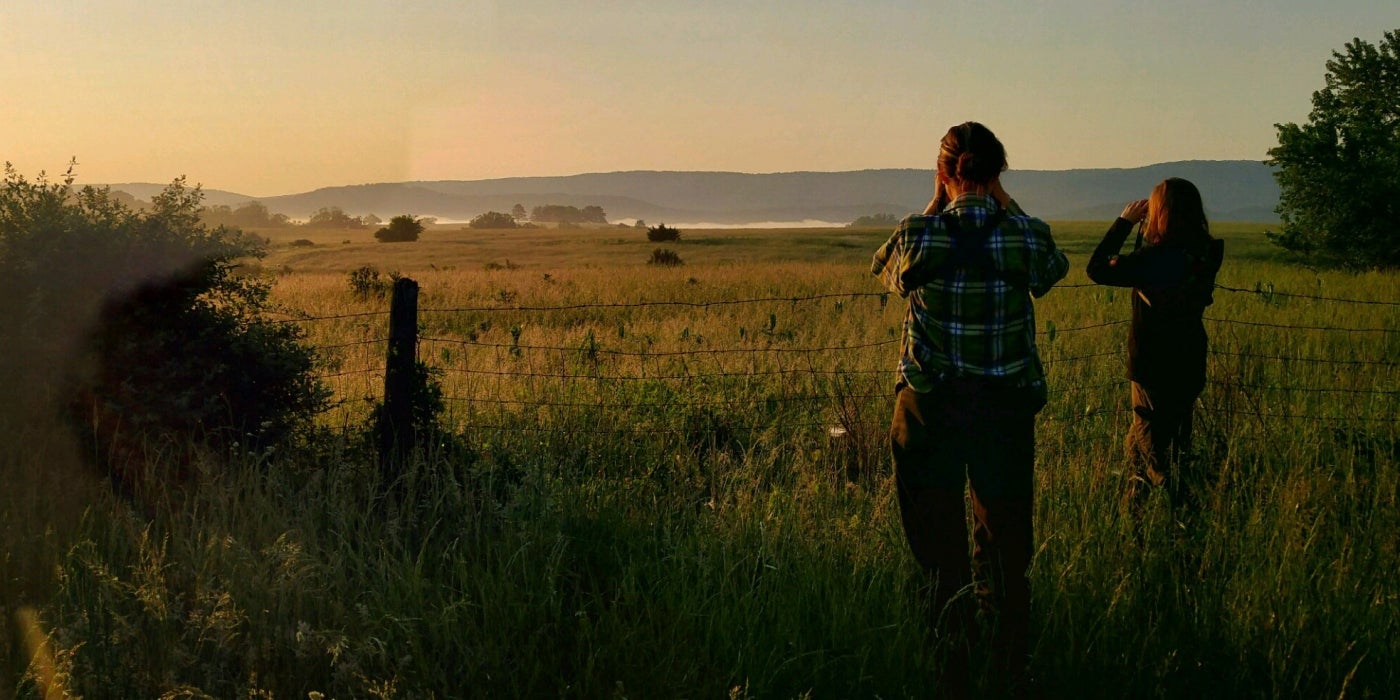
What is the question you hope to answer?
“How can we help bobwhite quail?”
That is, the collective we. Whether we are scientists, landowners or public park managers, it is ultimately up to all of us as land stewards to implement science-informed conservation strategies in our landscape to help bring back the bobwhite and many other species.
From public to private properties, quail are in need of specific habitats to survive. It has been exciting to see many land managers, including several in the Virginia Working Landscapes research network, working to improve quail habitat on their properties. We want this study to help inform these efforts by asking more specifically: Which land management strategies are the most effective in helping to bring back the quail population? Which are not? What do quail populations need not only to survive but also to thrive? What other species will also benefit from the efforts to help quail?
As with many studies that look at population dynamics and ecosystems, this is a long-term study. Our first habitat surveys were conducted last year. We will survey birds in both spring and fall on an annual basis, and then conduct additional habitat and vegetation surveys every 5 years.
What does conducting a survey entail?
The study compares large focal areas that are actively managed for quail to similar scale properties that are not implementing practices to create quail habitat. By conducting surveys at both types of landscapes, we are hoping to learn whether or not the management methods implemented in the focal areas are helping the quail populations — and, if so, how much?
To do this, we not only conduct bird surveys in the spring and fall to estimate the number of quail in the study areas, but we also conduct rigorous habitat and vegetation structure surveys across more than 900 acres at each site. The habitat assessment data coupled with population numbers, should help us determine the most essential habitat features for quail.
What do you find most exciting about this research?
What I find most exciting about this project is that this is a nationwide effort. By sharing time and expertise with multiple partners, we can collectively accomplish a lot more than one group alone. This is exactly the kind of effort needed to help the quail given the steepness of their decline and their large multi-state range. As we work together to learn how to help quail, our efforts will also benefit a whole suite of other species that share their habitat.
This story appears in the November 2019 issue of National Zoo News. Interested in helping bobwhite quails make a comeback? Check out this helpful resource to get started. Partners in this ongoing study include the National Bobwhite Conservation Initiative, Virginia Quail Recovery Initiative, National Park Service and Manassas National Battlefield Park.
